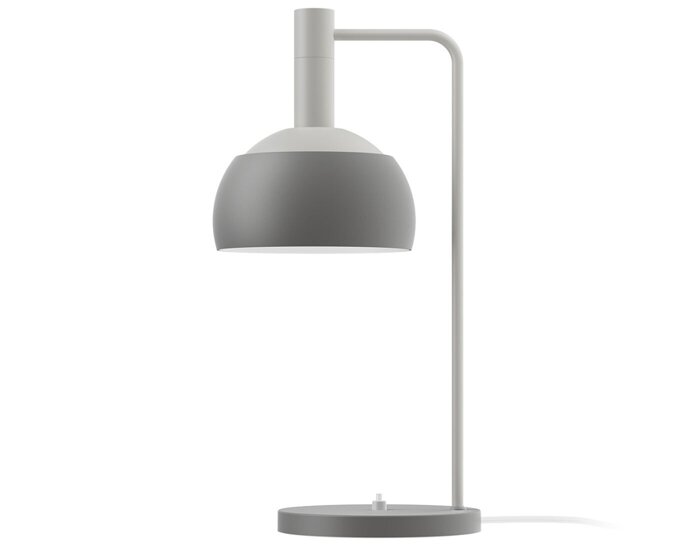FJ Elements Table Lamp
by Finn Juhl from Louis Poulsen
fj elements table lamp
Design Finn Juhl, 1963
Wet painted aluminum, polycarbonate diffuser
Made by Louis Poulsen
This lamp design is one of the few ever created by Finn Juhl (1912-1989), one of Denmark's most renowned architects. Initially designed in 1963, the pendant and table lamp were reintroduced as FJ Elements in 2025, including the original two-toned grey variant.
The lamp's name comes from Finn Juhl's hand sketches, in which he described it as being composed of "elements". These early drawings document the lamp's form, proportions and the concept for an entire lamp series, and also tell of its overall construction. While the materials and geometric lines of the FJ Elements' design stand out in their simplicity, the playful creativity is evident in how the upper shade can rotate around on the lower shade. This function allows you to control the direction of the light in multiple ways, while also transforming the lamp's appearance.
While the FJ Element's geometric shapes embody simplicity, the playful creativity is evident in how the upper shade can rotate on the lower shade. This feature enables you to direct the light as you see fit. The centerpiece of the series is the pendant. However, by incorporating what Finn Juhl referred to as "a linking element", he was able to adapt the initial design into a table lamp as well. Cord: white fabric cord on white & original grey, black fabric cord on black.
6.9" w | 9.1" d | 17.7" h | cord: 110"
light source: 1x 15W E14 bulb
Wet painted aluminum, polycarbonate diffuser
Made by Louis Poulsen
This lamp design is one of the few ever created by Finn Juhl (1912-1989), one of Denmark's most renowned architects. Initially designed in 1963, the pendant and table lamp were reintroduced as FJ Elements in 2025, including the original two-toned grey variant.
The lamp's name comes from Finn Juhl's hand sketches, in which he described it as being composed of "elements". These early drawings document the lamp's form, proportions and the concept for an entire lamp series, and also tell of its overall construction. While the materials and geometric lines of the FJ Elements' design stand out in their simplicity, the playful creativity is evident in how the upper shade can rotate around on the lower shade. This function allows you to control the direction of the light in multiple ways, while also transforming the lamp's appearance.
While the FJ Element's geometric shapes embody simplicity, the playful creativity is evident in how the upper shade can rotate on the lower shade. This feature enables you to direct the light as you see fit. The centerpiece of the series is the pendant. However, by incorporating what Finn Juhl referred to as "a linking element", he was able to adapt the initial design into a table lamp as well. Cord: white fabric cord on white & original grey, black fabric cord on black.
6.9" w | 9.1" d | 17.7" h | cord: 110"
light source: 1x 15W E14 bulb
Finn Juhl
Finn Juhl aimed at a more organic and natural design form without role models or inherited restrictions. He designed by measuring his own body and analyzing how the individual components of the chair should carry the human body.
Louis Poulsen designs are based on the principle that form follows function. Innovative designs and quality materials are instrumental in producing Louis Poulsen iconic lighting.












 write a review now
write a review now
